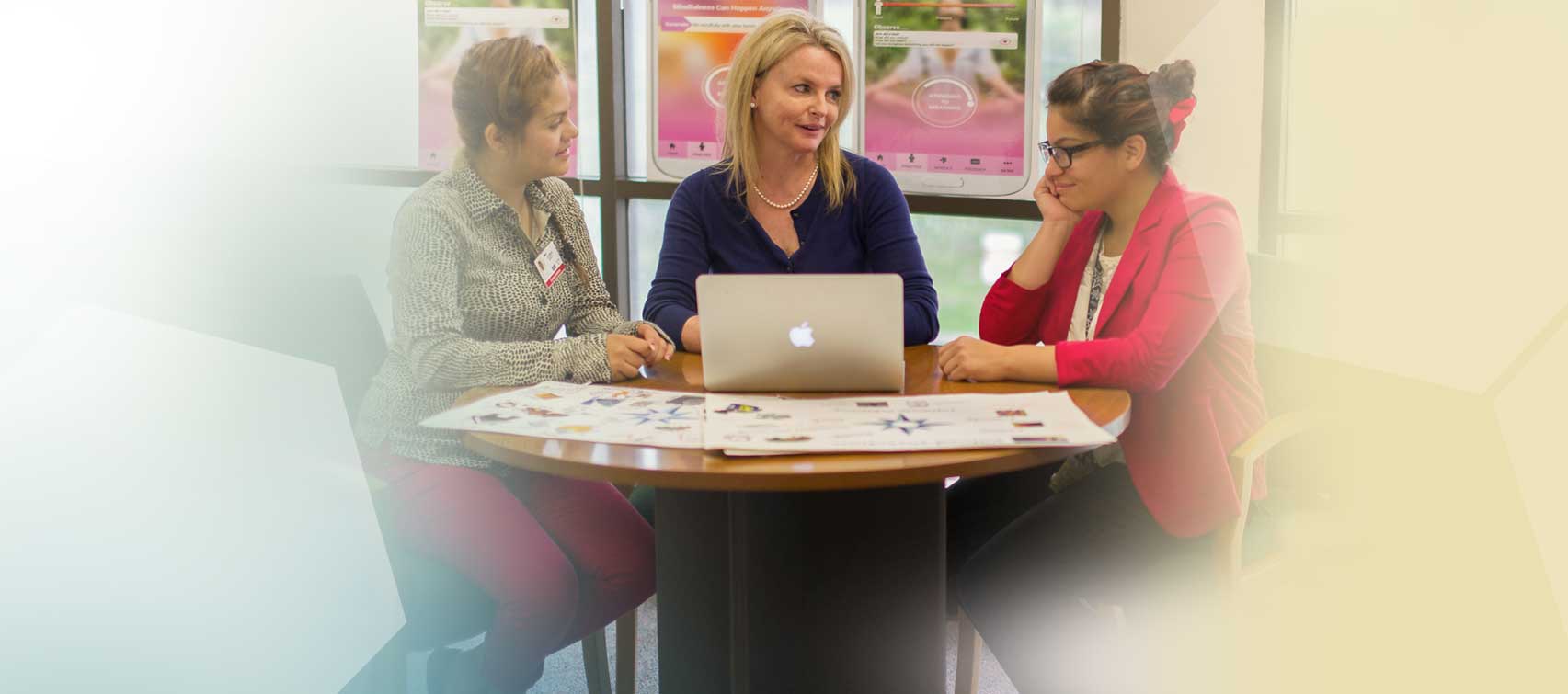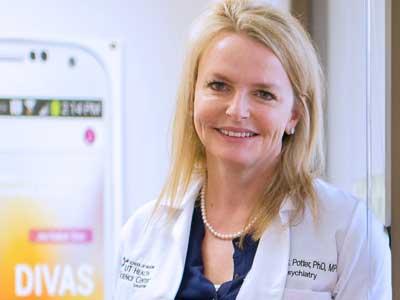Jennifer Sharpe Potter, Ph.D., M.P.H., started her professional life as a thespian, not a therapist. As a young actor, Dr. Potter realized that what she really enjoyed was not tripping the light fantastic, but deducing the human motivations behind the bright lights.
Years of study and hard work led her to establish the Opioid Pain and Addiction Laboratory (OPAL) at the UT Health Science Center San Antonio, where researchers conduct treatment-related research on substance-use disorders.
“It is very common to have chronic pain, but those with opioid use disorder are often disenfranchised from pain care,” said Dr. Potter, associate professor in the departments of Psychiatry and Anesthesiology and assistant dean for research and student programs in the School of Medicine at The University of Texas Health Science Center San Antonio. “There’s a stigma because of their addiction and history of substance abuse. So much of what you are is defined by the stigma that’s carried, unfortunately.”
Making the connection
Social networking sites are a way to educate the public and remove the stigma. When she or her researchers find an article, video or helpful reference, they post it to OPAL’s Facebook, tweet it, blog about it or feature it on their Bulb virtual conference site.
The links posted on social networking sites lead to a variety of resources: a conference on how to identify opioid abuse, how to talk to teens about abusing pain medication and documentaries about addiction.
“We need to meet people where they are at,” said Dr. Potter. “Our social media sites recruit, they are a practitioner’s resource, they are a living archive and a training platform.”
The OPAL Facebook page displays on-point journal articles, which are cross-posted on multiple platforms — Facebook, Twitter, and LinkedIn — to drive discussion. As the discussion grows, the stigma lessens.
Social media raises visibility among multiple constituent groups, much more than a journal study might, Potter explained.
“I really think you need to get people where they are at. We need to leverage what we know about behavior and our research on what motivates people, which Google and app developers and marketing agencies have used for years, and use it ourselves. Why are games like Dots and Angry Birds successful? Because they tap into that part of ourselves that causes us to be addicted to a behavior and it becomes an obsession. How can I tap into that and get people to be compliant with their meds? That’s the next step. It’s exciting, the potential we have using social media.”
Dr. Potter and her students are working with a local mobile application developer to create a mindfulness meditation app for women who are breast cancer survivors. In beta testing during summer 2014, Dr. Potter’s goal is to have the app teach survivors coping skills and supply data that can be used by researchers to learn more about the mental health of breast cancer survivors.
“We want them to learn, to guide them through how to breathe, without us physically being there,” Dr. Potter explained. “Research shows that people download apps all the time, but then don’t use them. We are putting something into app form that not only does something, but does something that leads to tangible change. We want to do good, we want to do something that makes a difference in behavior.”
Applications like Bulb, a portfolio Web application, allow Dr. Potter’s researchers and students to display the studies keep online archive. Dr. Potter requires her students to start thinking of how to translate their research work and scientific papers into an online platform for general consumption, because she sees shares, tweets and likes as a part of the future of behavioral research.
“These are all ways we can use to reach people that we couldn’t do otherwise,” said Dr. Potter. “We need to promote what we do to let people know. People are interested, but people may not have access to services, they may be in remote areas with no access to treatment, they may not realize that they can get treatment.”

